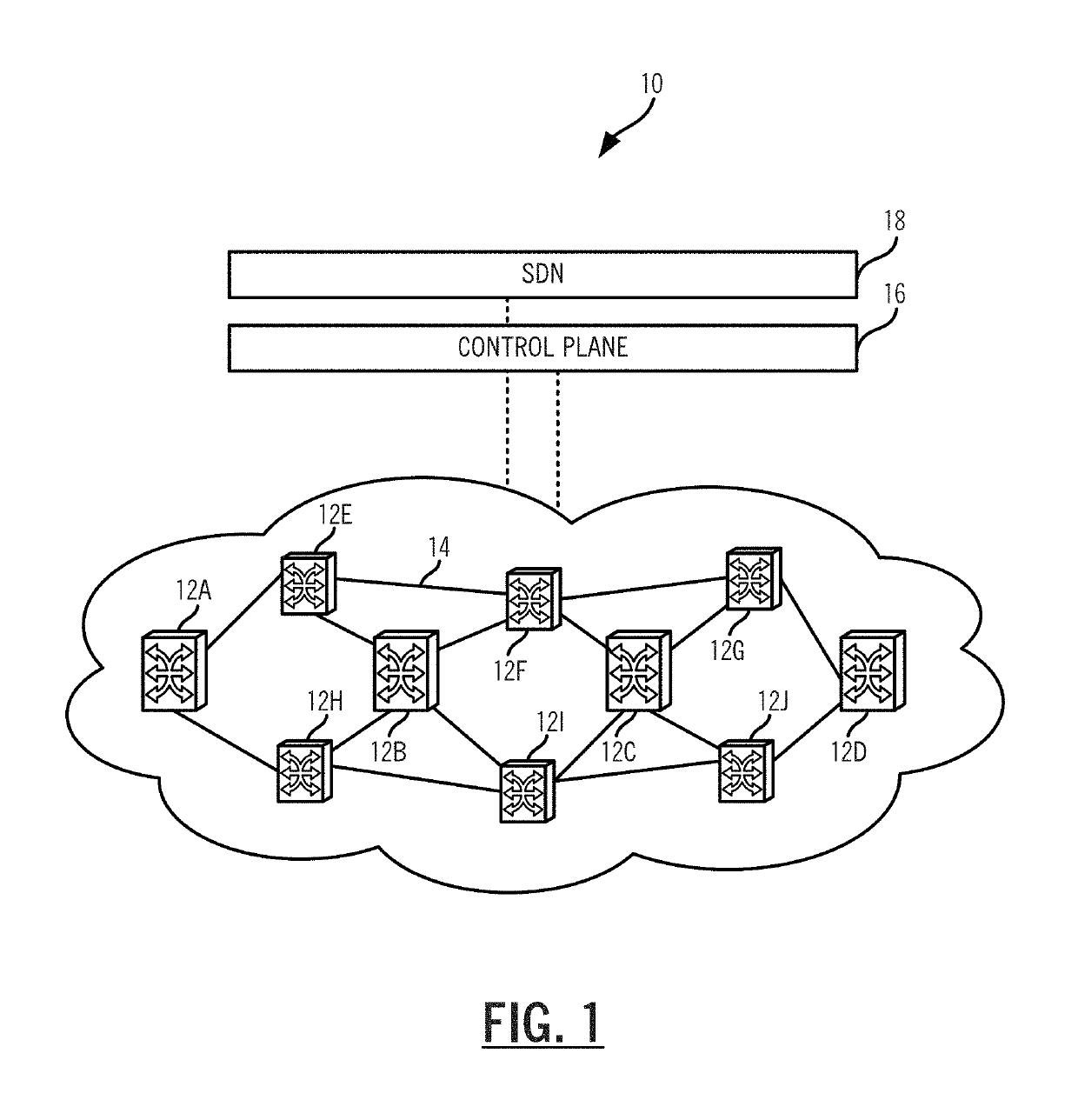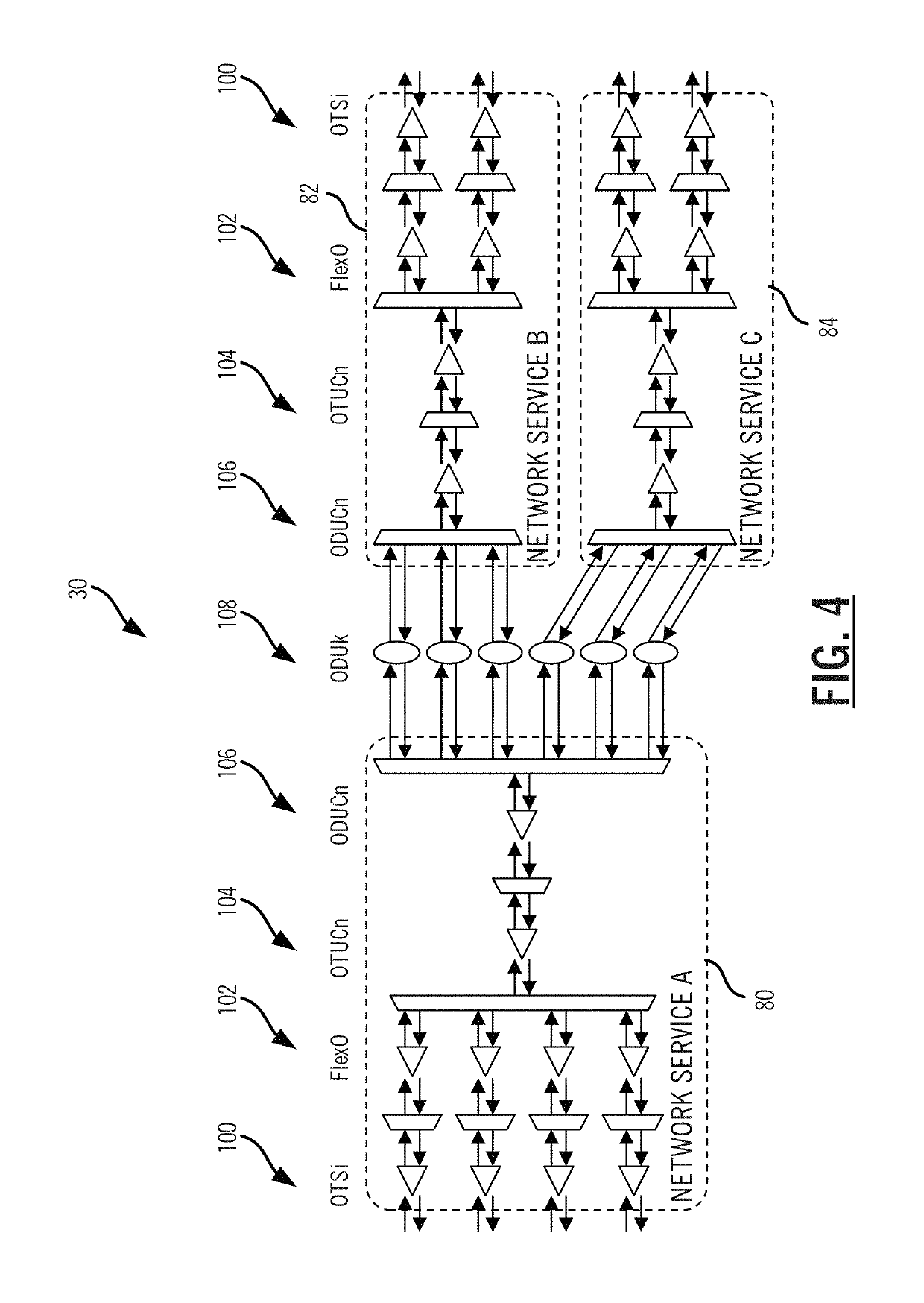Partial survivability for multi-carrier and multi-module optical interfaces
a multi-module, optical interface technology, applied in the direction of multiplex communication, time-division multiplex, electrical apparatus, etc., can solve the problems of affecting a significant amount of services, affecting the overall reliability, and putting the overall reliability at risk,
- Summary
- Abstract
- Description
- Claims
- Application Information
AI Technical Summary
Benefits of technology
Problems solved by technology
Method used
Image
Examples
Embodiment Construction
[0019]Again, in various exemplary embodiments, the present disclosure relates to partial survivability for multi-carrier and multi-module optical interfaces such as Optical Transport Network (OTN), Flexible Ethernet (FlexE), and Flexible Optical (FlexO). As described herein, a failure of any OTSi carriers, the entire OTUCn network interface associated with the OTSi carriers is considered as failed and consequent actions are applied across the entire Optical Data Unit Cn (ODUCn) associated with the OTUCn, affecting all ODUk services within the ODUCn. This also applies similarly to FlexO client interfaces carrying a single High Order (HO) OTUCn and multiple Low Order (LO) Optical Data Unit k (ODUk) services. Note, the term services can be used interchangeably with clients, e.g., ODUk services and FlexE clients. Systems and methods described herein apply consequent actions to only the channelized services which are directly impacted by failed carriers and allow other channelized servic...
PUM
 Login to View More
Login to View More Abstract
Description
Claims
Application Information
 Login to View More
Login to View More - R&D
- Intellectual Property
- Life Sciences
- Materials
- Tech Scout
- Unparalleled Data Quality
- Higher Quality Content
- 60% Fewer Hallucinations
Browse by: Latest US Patents, China's latest patents, Technical Efficacy Thesaurus, Application Domain, Technology Topic, Popular Technical Reports.
© 2025 PatSnap. All rights reserved.Legal|Privacy policy|Modern Slavery Act Transparency Statement|Sitemap|About US| Contact US: help@patsnap.com



